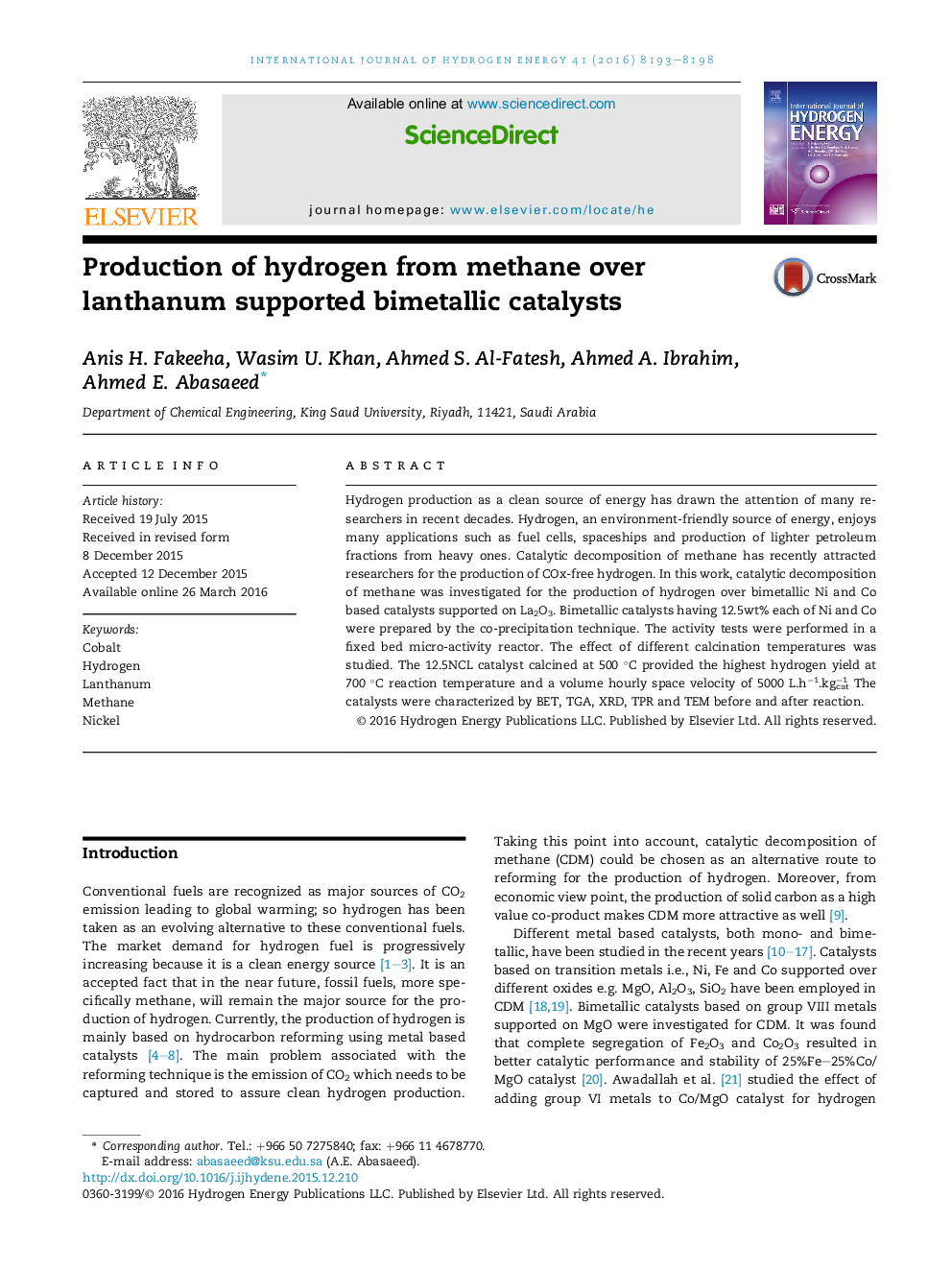| Article ID | Journal | Published Year | Pages | File Type |
|---|---|---|---|---|
| 1277314 | International Journal of Hydrogen Energy | 2016 | 6 Pages |
•Conventional fuels emit CO2 leading to global warming.•Hydrogen production is vital source for clean energy.•Catalytic decomposition of methane produces COx-free hydrogen.•NiCo bimetallic catalysts over La2O3 were employed for methane decomposition.•Catalyst calcined at 500 °C produced the highest hydrogen yield.
Hydrogen production as a clean source of energy has drawn the attention of many researchers in recent decades. Hydrogen, an environment-friendly source of energy, enjoys many applications such as fuel cells, spaceships and production of lighter petroleum fractions from heavy ones. Catalytic decomposition of methane has recently attracted researchers for the production of COx-free hydrogen. In this work, catalytic decomposition of methane was investigated for the production of hydrogen over bimetallic Ni and Co based catalysts supported on La2O3. Bimetallic catalysts having 12.5wt% each of Ni and Co were prepared by the co-precipitation technique. The activity tests were performed in a fixed bed micro-activity reactor. The effect of different calcination temperatures was studied. The 12.5NCL catalyst calcined at 500 °C provided the highest hydrogen yield at 700 °C reaction temperature and a volume hourly space velocity of 5000 L.h−1.kgcat−1 The catalysts were characterized by BET, TGA, XRD, TPR and TEM before and after reaction.
Graphical abstractProduction of hydrogen via catalytic decomposition of methane was investigated over lanthanum supported bimetallic catalysts. Catalytic performance results revealed that 12.5NCL catalysts calcined at 500 °C exhibited the highest activity, in terms of hydrogen yield, among all tested catalysts.Figure optionsDownload full-size imageDownload as PowerPoint slide
